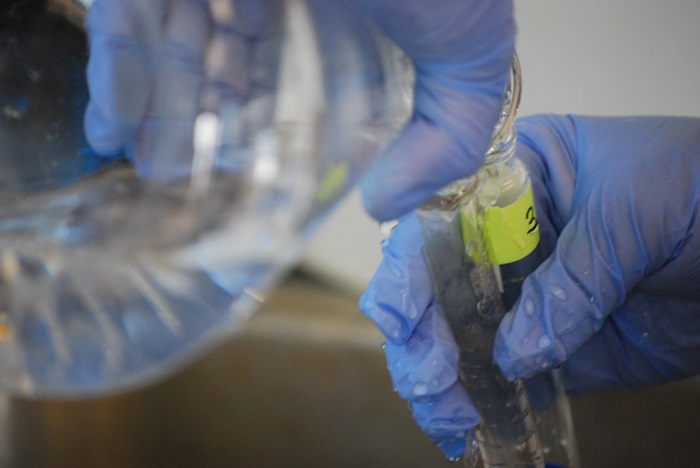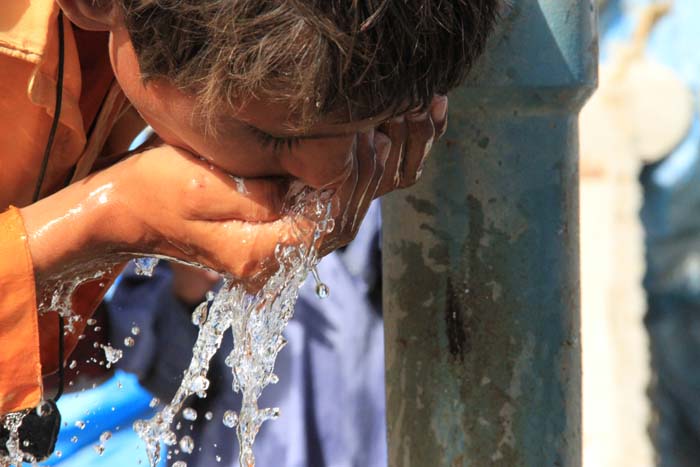
Its radiological, physical, chemical, and biological properties make water suitable for supporting aquatic life, irrigation, drinking, and recreation. These are together known as water quality.
Sustainable development, ecosystem stability, and human health depend on high-quality water. The health of human populations and ecosystems depends on improving water quality.
Some ways to improve water quality are as follows:
Bring Different Sectors Together
In order to effectively manage water quality, it is common for several stakeholders and sectors, such as local communities, businesses, government agencies, and NGOs, to work together. The best way to enhance water quality is for stakeholders to collaborate and find solutions.
Monitor the Water Quality
The only way to find out where pollution is coming from and how it’s changing over time is to check the water quality on a regular basis. Management may use this data to make better decisions and identify which areas need more attention first.
Protect Watersheds
These are areas of land that drain into a shared water body. Preventing sedimentation and contaminants from reaching water bodies is achievable by protecting and restoring watershed areas. Erosion control measures, reforestation, and land-use planning are all possible components.
Upgrade Wastewater Treatment Plants
Keep wastewater treatment plants up-to-date and in good working order. This allows them to filter out contaminants before releasing cleaned water into the environment.
Stormwater Management
We should implement green infrastructure initiatives such as green roofs, permeable roadways, and rain gardens to control stormwater runoff and lower pollution levels in water sources.
Promoting Sustainable Agriculture
If we want less fertilizer and pesticide runoff into water bodies, we need to see more farmers using cover crops, crop rotation, and precision agriculture.
Foster community Education and Involvement
Get people talking about how important it is to have clean water, and get them involved in protecting and improving water quality in their communities. One way to reduce pollution is to promote eco-friendly practices like recycling and reducing water consumption.
Pollution Reduction
Reducing pollution from both point sources (from things like factories) and dispersed sources (from city drainage systems and agricultural runoff) requires action. Promoting sustainable agriculture methods, regulating industrial discharges, and improving waste management procedures are all examples of what this may entail.
Cut Down on Pollution from Nutrients
Toxic algal blooms and an excess of nutrients like phosphorous and nitrogen can negatively impact water quality. Riparian vegetation restoration, creating buffer zones around water bodies, and limiting fertilizer use areas are all ways to reduce nutrient pollution.
Keep Wetlands Safe
Swamps act as natural filters, catching sediment and pollutants before they reach larger bodies of water. Enhancing water quality is achievable through the preservation and restoration of wetland habitats.
Two qualities of pure water?
- Neutral pH
The pH of pure water is 7, making it neutral and free of acidity and basicity. It has several potential uses because it is not reactive or corrosive in typical settings. This includes drinking water and industrial operations.
- Transparency
Pure water is completely transparent and lacks color, allowing light to flow without scattering. In addition to being aesthetically pleasing, this quality is important for a number of chemical and biological processes.
6 indicators of good water quality?
Ecosystem sustainability and human health depend on drinking water that is free of contaminants. Here are 6 signs of good water quality:
Biotic Indices
As a measure of water quality, biotic indices look at how many and what kinds of aquatic creatures are present. A wide variety of fish, invertebrates, and aquatic plants thrive in environments that are in good health. Reduced species abundance and richness indicate poor water quality due to habitat loss or pollution.
 Dissolved Oxygen
Dissolved Oxygen
There must be sufficient amounts of dissolved oxygen for aquatic organisms to thrive. The dissolved oxygen concentration in a healthy body of water should be greater than 5 mg/L.
An overabundance of organic matter breakdown or pollution can cause low dissolved oxygen levels. This, in turn, causes hypoxia and kills aquatic life.
Color
In general, high-quality water is colorless and clear. Nevertheless, dissolved organic materials from plants can cause natural bodies of water to appear slightly colored. Unnatural colors, including shades of green or brown, could be a sign of contamination due to agricultural practices or industrial runoff.
pH Level
You can tell how alkaline or acidic it is by looking at its pH level. A pH between 6.5 and 8.5 is ideal for the majority of aquatic species. Animals living in water are vulnerable to disturbances outside this range. Geological factors can cause some natural differences, but if there are noticeable changes, it could be a symptom of pollution.
Clarity/Transparency
When there are few particles in the water—contaminants or algae—it’s usually a good sign that the water is clean. Plants and animals in water benefit from increased light penetration and habitat provisioning made possible by transparency.
Odor and Taste
An absence of taste and smell is a sign of high-quality water. Tastes or off-putting smells could be signs of pollutants like too much organic matter, industrial waste, or sewage.
Consistent monitoring of these indicators enables the early detection of changes in water quality. This, in turn, allows for the prompt implementation of measures to safeguard and maintain freshwater resources.
2 coagulants for water purification
The introduction of coagulants to the water occurs as part of the purification process; coagulants are introduced into the water to bind the tiny particles together and facilitate their removal. In order to purify water, there are two common coagulants:
Polyaluminum chloride (PAC)
Another coagulant that has extensive application in water purification is polyaluminum chloride. We create it by polymerizing a partially neutralized aluminum chloride solution with water. Because of its greater basicity than alum, polyaluminum chloride is able to neutralize a broader range of water contaminants successfully. The mechanism of action of PAC is similar to that of alum. It helps suspended particles to agglomerate and sink by removing their negative charges.
Aluminum Sulfate (Alum)
Alum, or aluminum sulfate, is a coagulant widely used for water treatment. The addition of water causes alum to dissociate into sulfate and aluminum hydroxide ions. Ions like this balance out the negative charges on water-borne particles. This causes them to aggregate into bigger particles called flocs. Then, filtering or sedimentation can make it difficult to remove these flocs.
The specifics of the treated water, available funds, and applicable regulations are some of the elements that need consideration when deciding between polyaluminum chloride and aluminum sulfate, two effective coagulants for water purification.
What is oxygen in water?
Dissolved molecular oxygen (O2) is what we mean when we talk about “oxygen in water” in contexts like oceans, lakes, and rivers. Diffusion from the air at the water’s surface is the main mechanism by which oxygen dissolves in water. Because it is necessary for respiration, the mechanism by which aquatic organisms derive energy from organic substances, dissolved oxygen is vital to survival. Many factors affect the amount of oxygen that dissolves in water.
This includes salinity, pressure, temperature, and the presence or absence of photosynthetic organisms. Aquatic organisms are vulnerable to hypoxia. This can be fatal if there isn’t enough dissolved oxygen in the water.
Conclusion
To keep water quality high, it is necessary to sample it often, analyze it, and interpret the results in order to find possible pollution sources and evaluate how well remediation efforts are working. The management and protection of water resources is a shared responsibility of communities, research institutes, environmental groups, and government authorities.
Our understanding of water quality is crucial for safeguarding ecosystems, maintaining human health, and ensuring sustainable water use for years to come.
